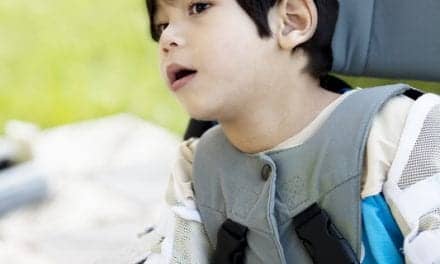Last Updated: 2007-08-01 15:28:03 -0400 (Reuters Health)
NEW YORK (Reuters Health) – In a case report, US researchers describe a patient with severe traumatic brain injury who experienced significant behavioral improvements following electrical stimulation of the central thalamus. Remarkably, the patient had been in a minimally conscious state for 6 years prior to treatment.
"Prior to the use of deep brain stimulation (DBS), the patient’s communication ability was inconsistent, including only slight eye or finger movements," study co-author Dr. Joseph T. Giacino, from the New Jersey Neuroscience Institute in Edison, said in a statement.
"In addition, he now chews and swallows his food and no longer requires a feeding tube. Before, he could not use his limbs for functional movement, but he can now perform some complex movements, including those required for drinking from a cup or brushing hair. Years of severe immobility and tendon contracture, however, do greatly limit him from carrying out these tasks," Dr. Giacino noted.
Impairments in consciousness that persist for 12 months or longer are generally considered to be permanent. No treatments to date have been shown to improve functional outcomes in such cases, according to the report in the August 2 issue of Nature.
However, findings from recent studies have suggested that some residual functional capacity may still exist in patients in minimally conscious states. The current research team hypothesized that this residual function is not accessible due to chronic underactivation of key cerebral networks. By providing stimulation to the central thalamus, the team sought to activate these networks.
In a double-blind crossover study lasting 6 months, the researchers found that thalamic stimulation did, in fact, improve function in their 38-year-old male patient.
The findings challenge the belief that treatment should be discontinued in patients with long-term impairment of consciousness, the researchers conclude.
"These results raise hope for some patients with brain injury, but there are two caveats," Dr. Michael N. Shadlen and Dr. Roozbeh Kiani, from the University of Washington in Seattle, note in a related editorial.
"First, this is a single case report; a carefully controlled clinical trial is needed to answer the remaining questions," they note. Second, this patient had preservation of important cortical structure; deep brain stimulation "would not benefit patients who have already lost the critical cortical structures."
In their editorial, Drs. Shadlen and Kiani emphasize the differences between minimally conscious state and more severe disorders of consciousness, such as coma and persistent vegetative state.
Nature 2007;448:539-540,600-605.
Copyright Reuters 2007. Click for Restrictions




